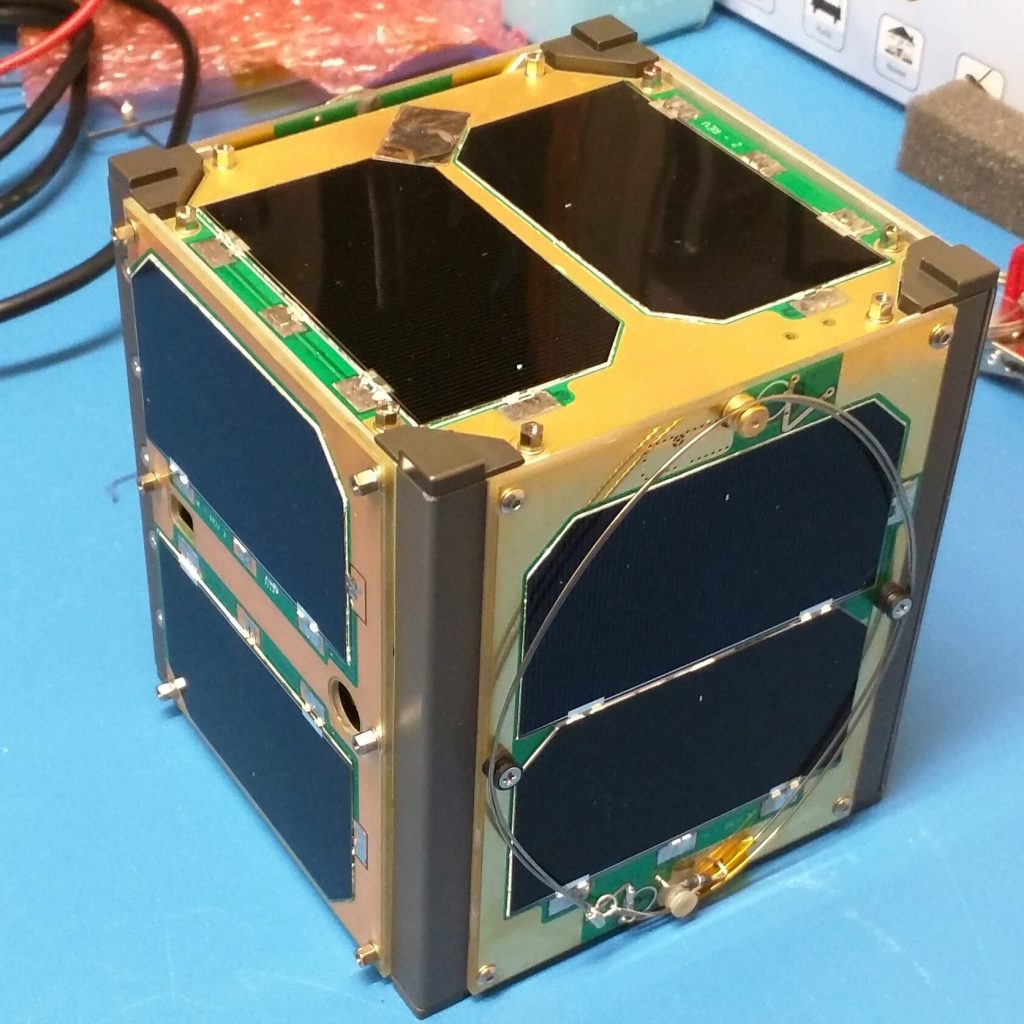 Photo of RadFxSat CubeSat. Credits: The Radio Amateur Satellite Corporation (AMSAT) and Vanderbilt University Photo of RadFxSat CubeSat. Credits: The Radio Amateur Satellite Corporation (AMSAT) and Vanderbilt University The educational CubeSat missions were selected through the CubeSat Launch Initiative as part of the 14th installment of NASA’s Educational Launch of Nanosatellites (ELaNa) missions. The ELaNa XIV mission was an auxiliary payload on the Nov. 18, 2017, launch of the Joint Polar Satellite System-1 satellite (now NOAA-20), a collaborative effort between the National Oceanic and Atmospheric Administration (NOAA) and NASA. One CubeSat launched from the JPSS-1 rocket, RadFxSat, is a partnership between students at Vanderbilt University, Nashville, Tennessee, and AMSAT, a worldwide group of amateur radio operators. The Vanderbilt team built the science payload while AMSAT did the integration onto their own CubeSat platform. Their experiment is designed to obtain early on-orbit data in support of modeling radiation effects in a commercial memory, currently used for consumer electronics. So far the project is successfully sending back data. “Because we partnered with the company donating the memory, there were engineering challenges to make sure we could communicate with the memory properly. I learned about power allocation and making sure the memories were within their power budget. I didn’t realize how important power was for a spacecraft until I had to do it myself,” said Rebekah Austin, a graduating Ph.D. student in electrical engineering at Vanderbilt. Austin is also a returning engineering summer intern at NASA’s Goddard Space Flight Center in Greenbelt, Maryland. A small group of students recently got to experience a rare, spaceflight thrill: seeing if the tiny satellite, called a CubeSat, they designed and built not only survived a rocket launch to space but also successfully gathered and transmitted data once on orbit. Meanwhile, another CubeSat project, called EagleSat-1, is working through post-launch challenges. “It turns out we are not getting data back. There is still learning occurring, which is our main reason for doing the program. The students are learning the process of failure analysis and understanding the spacecraft a little bit better as a result of trying to figure out what could have gone wrong and try to figure out if there is anything we can do while it is on orbit,” said Dr. Gary Yale, associate professor of aerospace engineering and faculty mentor for EagleSat-1, at Embry-Riddle Aeronautical University in Prescott, Arizona. One possibility under consideration by the team of undergraduate researchers is that their antenna did not deploy after launch. The EagleSat-1 team hopes that if that is the problem, eventually the fishing line holding the antenna down will decay due to ultraviolet radiation in the space environment, causing the line to break and deploy the antenna, which was the backup plan for that eventuality. For additional information about NASA’s CubeSat Launch Initiative program, visit: http://go.nasa.gov/CubeSat_initiative. https://www.nasa.gov/feature/elana-xiv-cubesat-launch-on-jpss-1-mission For additional information on JPSS: http://www.jpss.noaa.gov/ For additional information on RadFxSat: http://www.isde.vanderbilt.edu/wp/radfxsat1/ For additional information on EagleSat: http://prescott.erau.edu/about/labs/axfab-eaglesat/
0 Comments
Your comment will be posted after it is approved.
Leave a Reply. |
321 go SPACE321 GO. SPACE reports and informs on global events, trends and news taking place within the Science, Technology, Engineering, and Aerospace industry. Archives
July 2024
Categories |
 RSS Feed
RSS Feed
